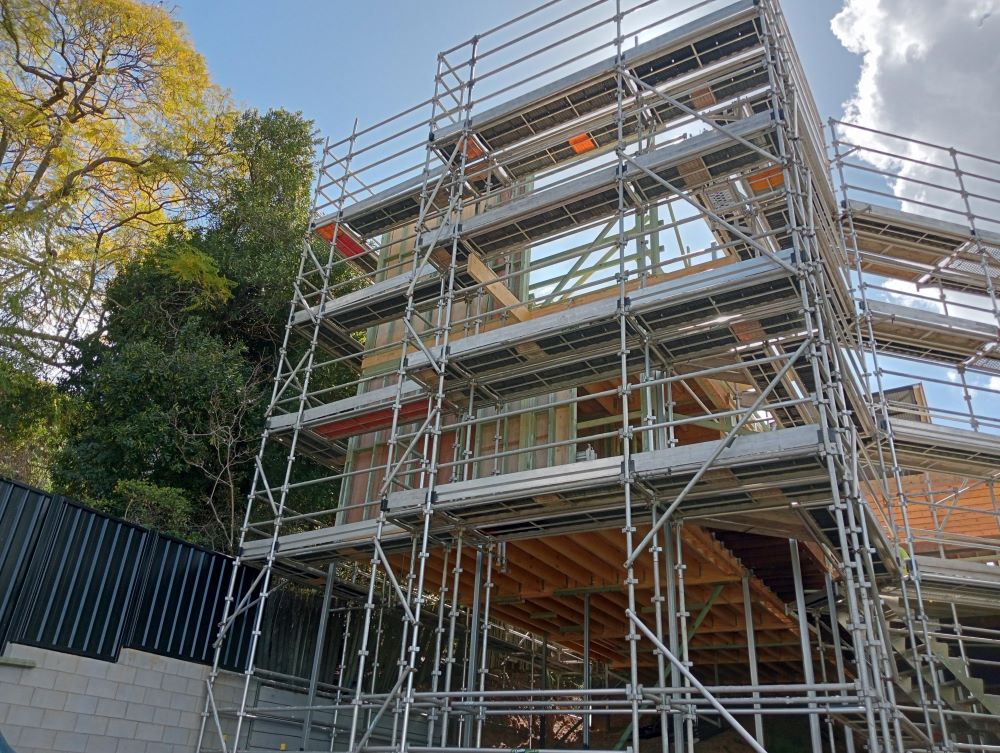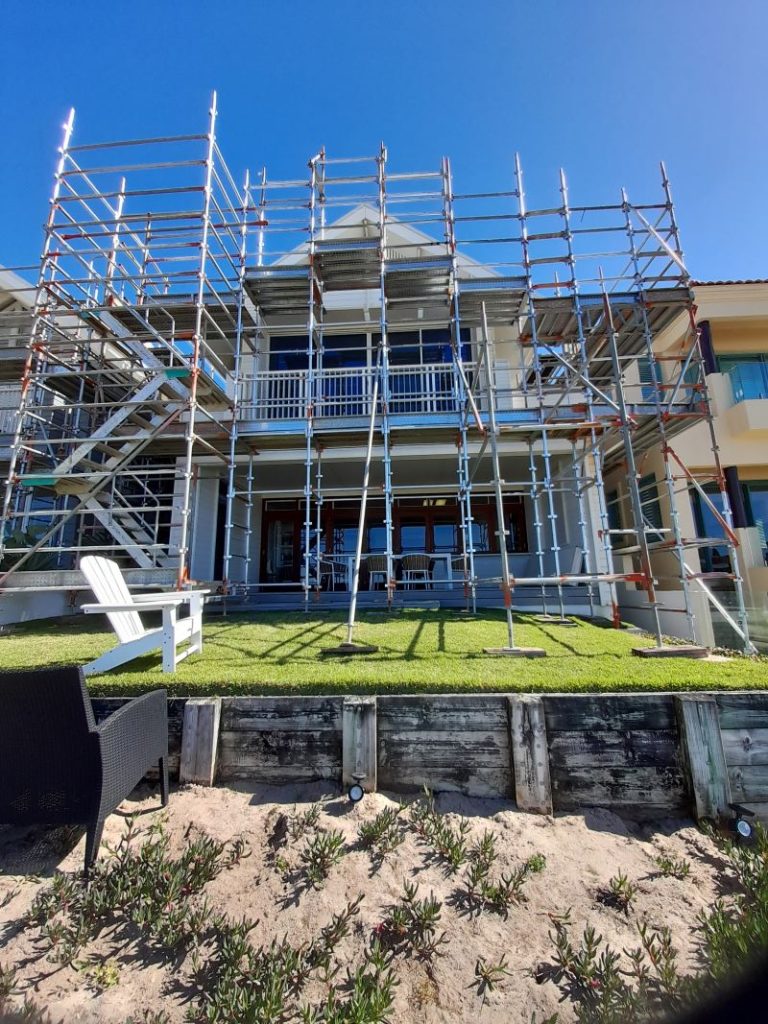Comprehensive Guide to Aluminium vs. Steel Scaffolding for Your Construction Projects
Choosing the right scaffold for your construction or renovation project is critical for ensuring both safety and operational efficiency. Two of the most popular materials on the market are aluminium scaffolding and steel scaffolding. Each material possesses a unique array of features, benefits, and specific applications that make them suitable for various project needs. This in-depth comparison will thoroughly examine both options, highlighting their characteristics, advantages, and ideal use cases to assist you in selecting the most appropriate scaffold that aligns with your particular requirements and project goals.
When evaluating scaffold options, understanding the unique benefits of aluminium and steel scaffolding is essential. We will delve into these attributes, empowering you with the knowledge necessary to make an informed choice that meets the specific demands of your project.

Maximize Project Efficiency with the Benefits of Aluminium Scaffolding
Aluminium scaffolding is celebrated for its lightweight structure and exceptional ease of use, positioning it as the go-to choice for projects that require frequent relocation and quick assembly. The components of aluminium scaffolding are notably lighter than their steel counterparts, which significantly enhances transportation and maneuverability on the job site. This trait is especially advantageous for contractors working in tight or confined spaces, where scaffolding needs to be adjusted often, leading to a more streamlined workflow and improved overall efficiency.
Moreover, aluminium scaffolding is renowned for its excellent corrosion resistance. This inherent quality makes it a superior option for outdoor projects or environments with high humidity, thereby ensuring that the scaffold retains its structural integrity and visual appeal over time. The rust-resistant nature of aluminium scaffolding promotes long-term performance and reliability, which is especially crucial for projects subject to challenging weather conditions or moisture exposure.
Setting up and dismantling aluminium scaffolds is generally quick and straightforward, as the components are designed for hassle-free assembly. This efficiency can result in significant time savings on site, particularly for projects with tight deadlines. By minimizing the time spent on setup, construction teams can divert more focus to completing their work effectively and safely, ultimately enhancing overall productivity and project outcomes.
Harness the Unmatched Strength and Stability of Steel Scaffolding
Steel scaffolding is lauded for its superior strength and impressive load-bearing capacity, making it an exceptionally robust option for construction projects that demand substantial support. This material is engineered to withstand heavy loads and challenging conditions, providing a stable and secure platform for workers, even in the most demanding environments. Its rigidity and strength make it the preferred choice for projects involving heavy machinery or large materials, ensuring safety and stability at elevated heights.
The durability of steel scaffolding is a key advantage, particularly in extreme weather conditions or high-traffic areas where scaffolding may experience heavy usage. Unlike lighter materials, steel scaffolding is engineered to resist bending or deformation, ensuring a safe working environment for personnel. This reliability fosters confidence and a sense of security among construction teams, allowing them to operate with peace of mind.
Furthermore, steel scaffolding is recognized for its cost-effective longevity. Although the initial investment may be higher compared to aluminium, the durability and extended service life of steel scaffolding make it a financially sound choice over time. This material's ability to withstand repeated use reduces the need for frequent replacements or maintenance, leading to substantial savings in the long run.
When weighing the options between aluminium and steel scaffolding, it is essential to consider the unique requirements of your project. Factors such as material weight, scaffold height and dimensions, and environmental conditions at the job site will significantly influence your final decision.
Consulting with your scaffold hire company can provide valuable insights, helping you select the most suitable option for your project's specific demands. For more information on when scaffolding is essential and the types of projects that may require it, refer to our article on when to hire scaffolding.
Crucial Factors to Weigh When Choosing the Right Scaffold Material
Several key considerations must be taken into account when deciding between aluminium and steel scaffolding. A thorough understanding of each scaffold material's strength and durability, weight and portability, and cost and affordability will empower you to make an informed decision that aligns with your project's specific needs and budgetary constraints.
Evaluating the Strength and Durability of Scaffold Materials
Both aluminium and steel scaffolds are well-regarded for their strength and durability; however, they exhibit distinct characteristics that may influence your selection. Steel scaffolding is typically recognized for its superior strength and load-bearing capacity compared to aluminium scaffolding. The robust nature of steel enables it to withstand heavy loads and maintain stability even in challenging construction scenarios.
On the other hand, aluminium scaffolds possess commendable strength and durability, though they may not support exceptionally heavy loads as effectively as steel. Therefore, it is vital to assess your project's weight requirements carefully to identify which scaffold material best fulfills your operational needs and safety standards.
Examining Weight and Portability Aspects of Scaffolding Options
Aluminium scaffolds hold a significant advantage regarding weight and portability. Their lightweight nature allows for much easier handling and transport compared to their heavier steel counterparts. This advantage is particularly beneficial in smaller-scale projects or scenarios where scaffolding needs to be repositioned frequently, as it minimizes physical strain on workers and enhances overall productivity on the job site.
While steel scaffolds may be heavier, they still offer a certain level of portability; however, they typically require more effort and manpower for transportation. Understanding the relevant weight and portability aspects of your project will ensure efficient and safe scaffold use throughout your operations, leading to better job site dynamics.
Uncover the Unique Benefits of Aluminium Scaffolding
Upon reviewing various scaffold materials, aluminium scaffolding presents a range of unique advantages that make it a favored choice for numerous construction and renovation projects.
Enjoy Effortless Handling with the Lightweight Design of Aluminium Scaffolding
A primary advantage of aluminium scaffolding is its lightweight design. Compared to steel scaffolding, aluminium is significantly lighter, enhancing its manageability and transportability. This characteristic not only accelerates the assembly and disassembly process but also contributes to a more efficient workflow, ultimately reducing the overall project timeline. Additionally, the ease of handling significantly boosts worker productivity, minimizing the risk of fatigue-related accidents and improving overall safety on site.
Exceptional Corrosion Resistance Ensures Long-lasting Performance
Aluminium scaffolding is known for its remarkable corrosion resistance, making it an ideal choice for various environmental conditions. Unlike steel, which is prone to rust and deterioration, aluminium's natural resistance to corrosion ensures it maintains its structural integrity even when exposed to moisture or outdoor elements. This quality is especially advantageous for projects conducted in humid or wet conditions, ensuring that the scaffold remains safe and effective throughout its utilization.
Boost Efficiency with Quick Assembly and Disassembly of Aluminium Scaffolding
Another significant benefit of aluminium scaffolding is its quick assembly and disassembly capabilities. The lightweight components, user-friendly connectors, and locking mechanisms streamline the setup process, making it especially valuable in time-sensitive projects or when scaffolding requires frequent relocation. The rapid assembly and disassembly associated with aluminium scaffolding not only saves time but also helps reduce overall labor costs, providing an economic advantage for project managers looking to optimize their resources.

Discover the Unmatched Benefits of Steel Scaffolding for Your Construction Needs
Steel scaffolding offers numerous advantages that solidify its reputation as a top choice among contractors and builders when determining the best scaffold for your construction project.
Experience Unmatched Strength and Load Capacity with Steel Scaffolding
A primary benefit of steel scaffolding is its unparalleled strength and load capacity. Steel is widely recognized for its exceptional durability and ability to support substantial weights, making it perfect for projects where scaffolding must bear significant loads. Steel scaffold systems are meticulously crafted to provide workers with a stable and secure platform, ensuring their safety while operating at elevated heights and in challenging working environments.
Enjoy Remarkable Durability Against Extreme Environmental Conditions
Steel scaffolding is resilient against a variety of environmental factors, making it suitable for harsh conditions. It can withstand adverse weather elements, including high winds, heavy rains, and extreme temperature fluctuations. This durability guarantees that the scaffold remains stable and secure, thus creating a safe working environment for construction teams. Whether undertaking projects such as gutter replacements or other tasks that require scaffolding in demanding conditions, steel scaffolding is engineered to endure the rigors of the job.
Unveil the Cost-Effective Longevity of Steel Scaffolding
Steel scaffolding is widely acknowledged for its remarkable longevity and overall cost-effectiveness. Its inherent durability ensures that the scaffold can withstand numerous construction projects over extended periods. Unlike other materials, steel scaffolding does not degrade quickly, resulting in fewer needs for replacements or repairs.
To determine the most suitable scaffold material for your specific project, it is crucial to carefully assess your needs, consult with industry professionals, and consider safety standards and budgetary limitations.
Critical Steps to Effectively Select the Right Scaffold for Your Project
Choosing the right scaffold for your project necessitates a meticulous assessment of your unique requirements. By thoroughly evaluating your project specifications, consulting with professionals, and taking into account safety and budget constraints, you can make a well-informed decision that aligns with your operational objectives and enhances overall project efficiency.
Thoroughly Assess Your Project Requirements for Optimal Scaffold Selection
Begin by evaluating the specific details of your project and the tasks that necessitate scaffold support. Key factors to consider include the height and configuration of the structure, the anticipated duration of the project, and any specialized needs that may arise during the process.
For instance, scaffolding for an apartment complex will have distinct specifications compared to scaffolding or guardrails for gutter replacement tasks. By gaining a comprehensive understanding of your project needs, you can determine the appropriate type and configuration of scaffold that will best align with your operational objectives, ensuring safety and efficiency on site.
The Importance of Professional Consultation in Scaffold Selection
Engaging with industry experts, such as Cando Scaffolding, is highly advisable when navigating the complexities associated with scaffold selection. Our extensive experience in the field ensures you receive invaluable guidance, helping you meet safety standards and regulatory requirements throughout your project.
Contact us today or request a quote to begin the process of selecting the ideal scaffold for your project.
The post-Scaffold Choices: Aluminium vs Steel for Your Project appeared first on https://writebuff.com/.
The Article Aluminium vs. Steel: Choosing the Best Scaffold for Your Project Was Found On https://limitsofstrategy.com
Comments are closed